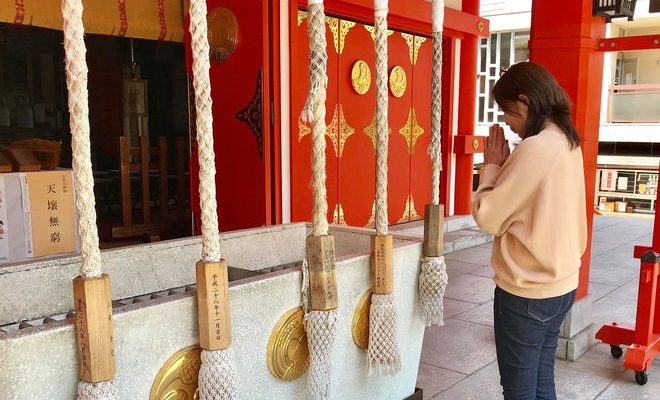Title: Religion and Physical Spaces (June, 2019)
A short reflection piece written in my 7 weeks stay in Japan!

My Japanese host family in Iwate had never once professed any kind of faith, nor have they showed any signs of religious inclination. At best, I noticed a small keychain that looked like a cross - although judging by the excessive number of gaudy gems embedded around it, it looked more like a tourist gimmick than a religious ornament.
It was only at our field trip to Jodogahama that my host mother first acknowledged any religious sentiment. After our boat ride with a big group of friendly elderly retirees, she brought us to an old friend of hers who ran a rickshaw service by the beach.
May I add, it was extremely awkward to have a 60-year-old man lug the weight of 2 21-year-old young adults on a steep incline while our host mother of similar age was struggling to keep up but nevertheless energetically taking pictures of us. Not to mention, the big group of elderly folks who we met on the boat strolled past us and waved at us – almost mockingly at our wasted youth.
As the rickshaw man was pulling our cart, he posed us the question: “Where do you think you will go when you die?”. That question surprised me, as this was my first time ever hearing a Japanese local casually making a spiritual reference. I answered the way I believed.
“Heaven, of course,” I replied.
He then asked the next question. “Do you know where heaven is?”
Unsure as to how to respond, I awkwardly pointed towards the sky.
He shook his head and responded, “It is right here.”
He began to point out some rocky mountains in the near distance. Identifying a head-like rock, a body-like rock and what looked to be feet, he concluded that that was the resting position of Buddha when he died, a lying position that faced the sky.
Of course, my broken Japanese couldn’t keep up with such abstract statements. I, therefore, had to seek translation help from my host mother, who earnestly repeated his words (in likewise broken English) as if she too fully believed this. With the Buddha directly behind us, he set us down and took out some hats.
Immediately, I blurted out “Buddha desu ka?”, referencing to the hat that resembled a lot like the silhouette of Buddha’s head. He praised me for my observation, and then made us pose like Buddha with our hands – that formed almost an L shape – for a picture.
My slight discomfort aside, it made me really wonder how religious and spiritual Japanese people can suddenly become when we enter religious and symbolic spaces like these. On any other day, one would assume that they were atheistic. And yet, in spaces like Jodogahama or Shinto shrines or Buddhist temples, I see a sudden show of religious sentimentality by the Japanese locals.
Religion here in Japan seems to be very much tied to physical spaces and to the material (symbolic and literal). Kamis are found in physical objects, a spike of religiosity in religious spaces, the general layman who has a kind of transactional relationship to the gods – who prays to them often for material gain in exchange, religion ties very closely to the material in this sense. While I am aware that these are very sweeping statements and that I still lack proper understanding of the intricacies and complexity of Buddhism, Shintoism and the wider Japanese cultural society, I can’t help but to find this observation rather intriguing and compelling.
No comments:
Post a Comment